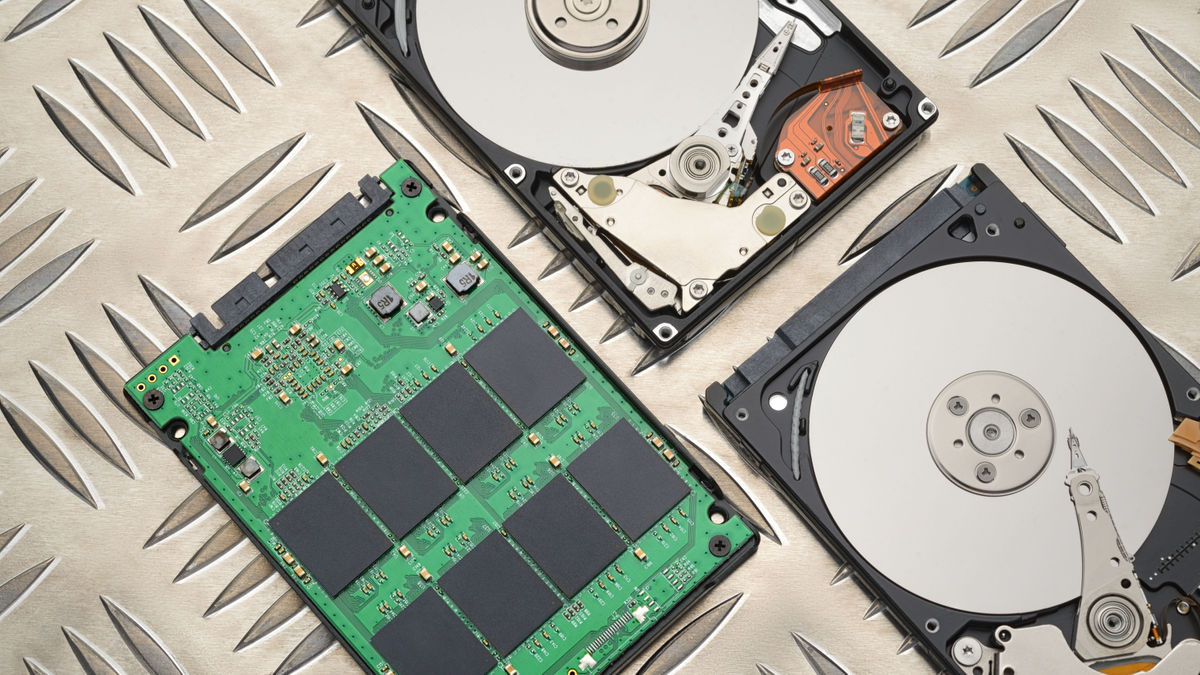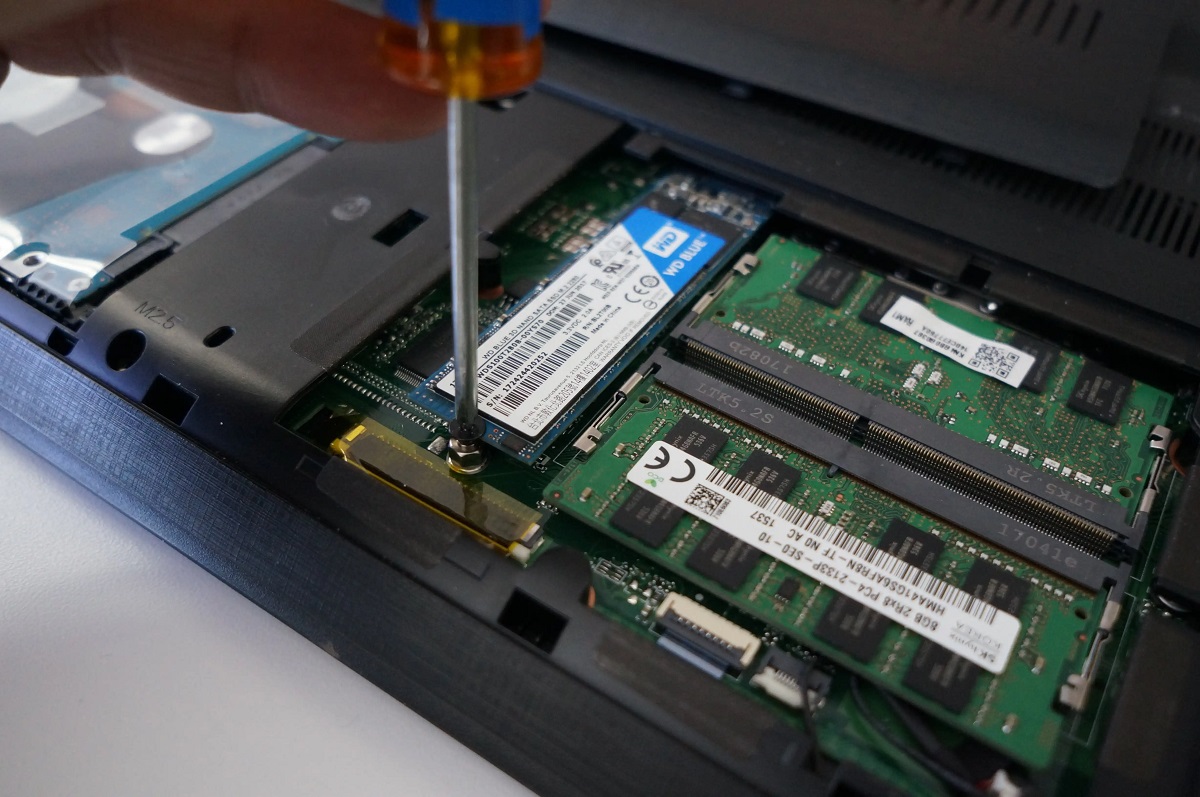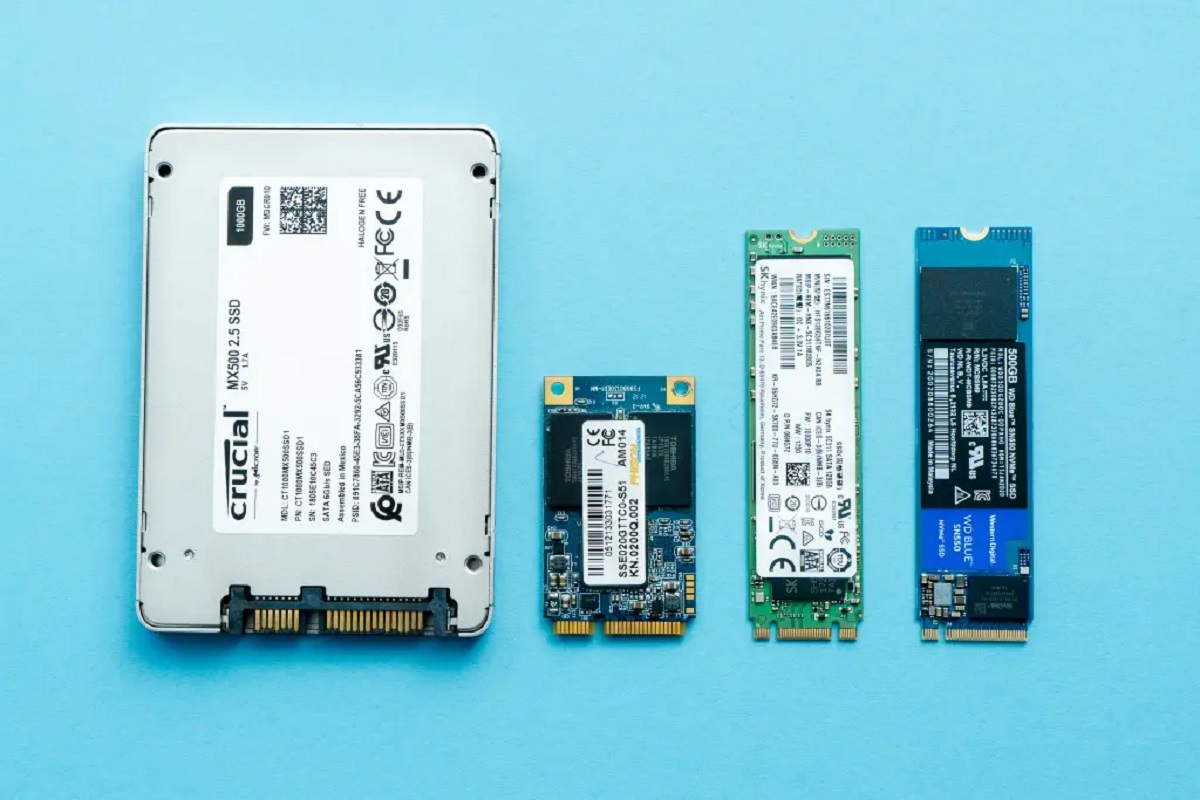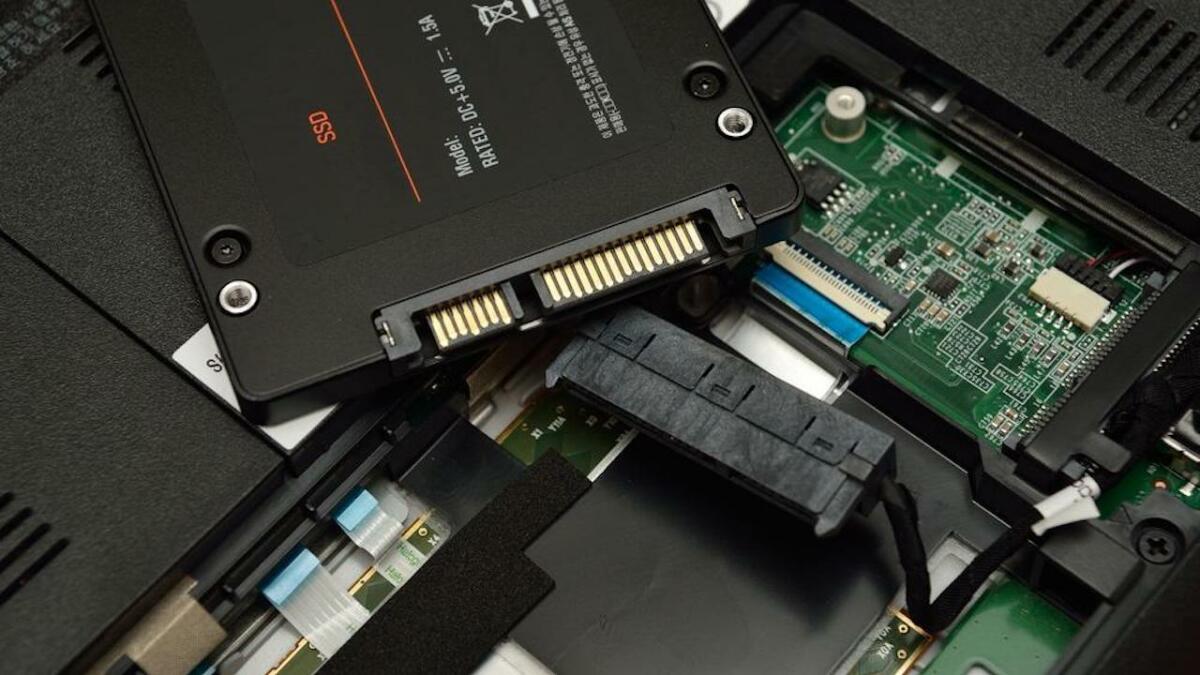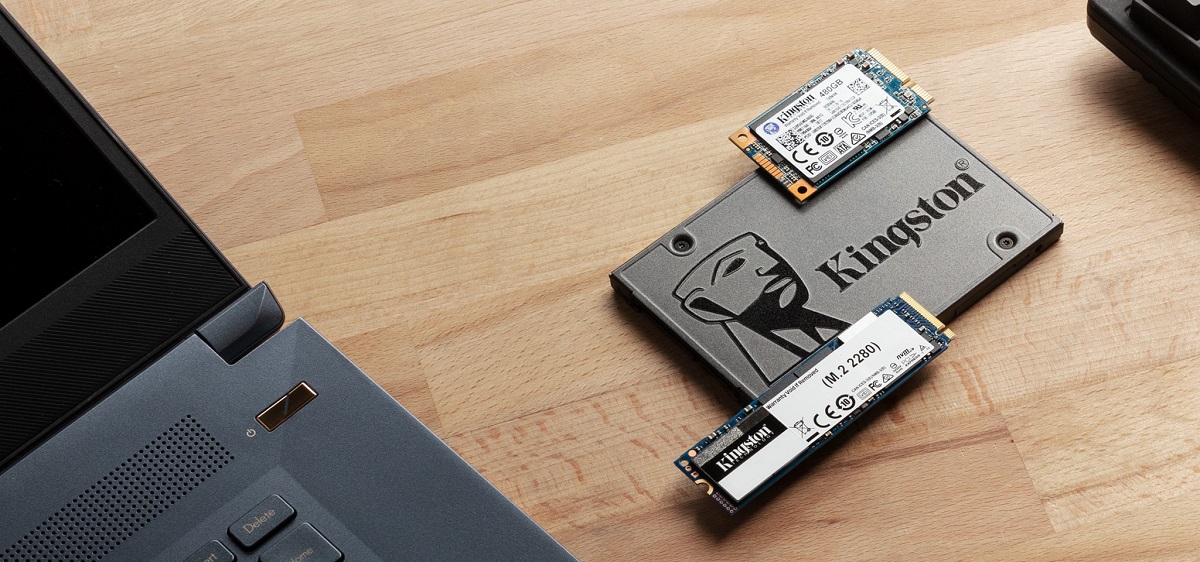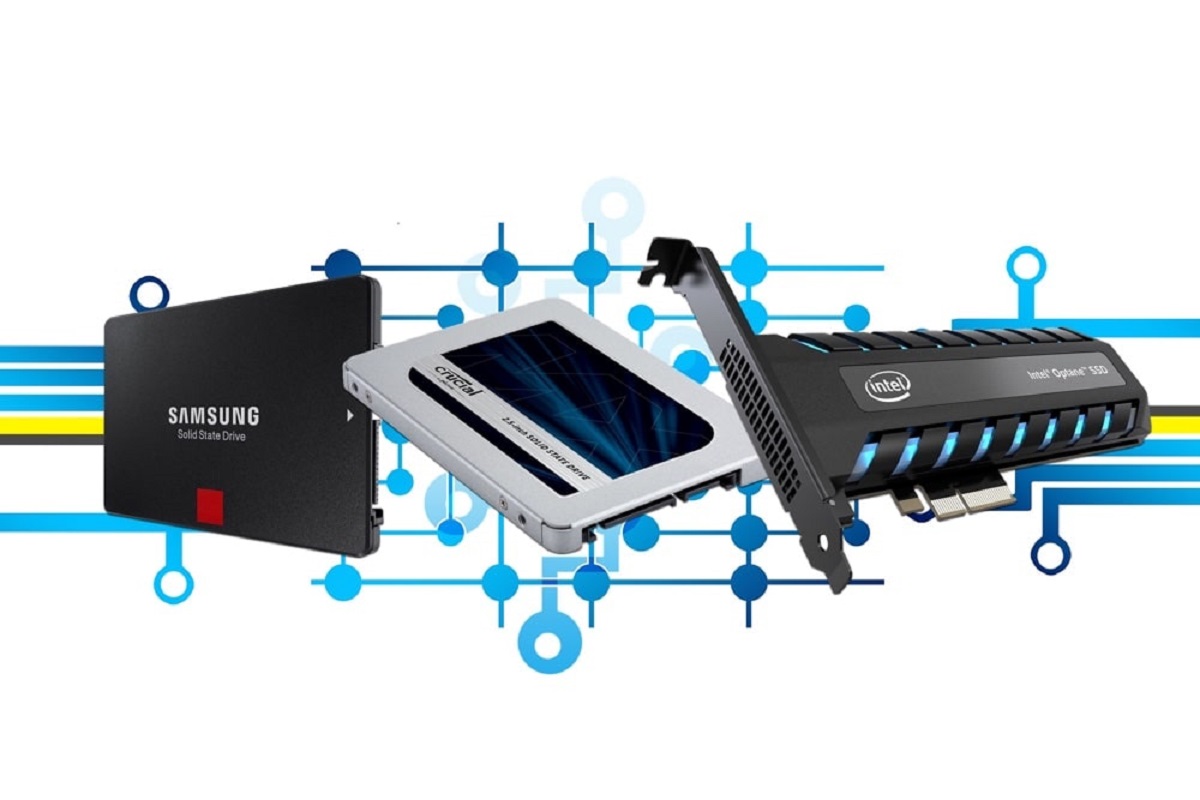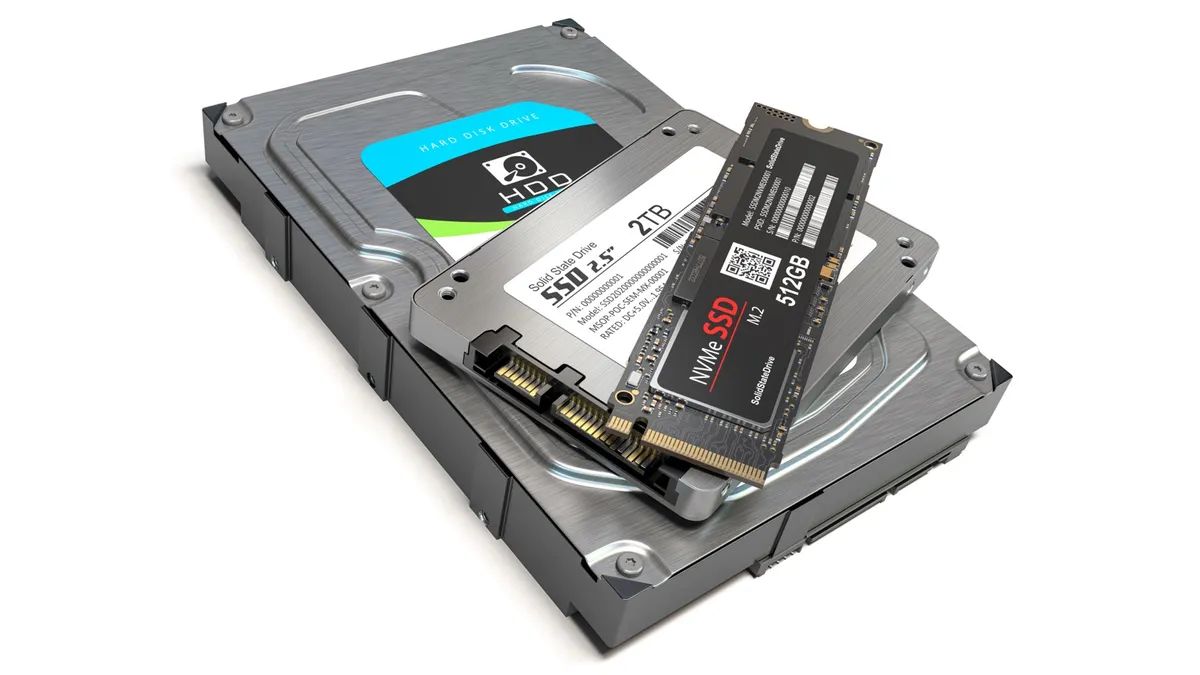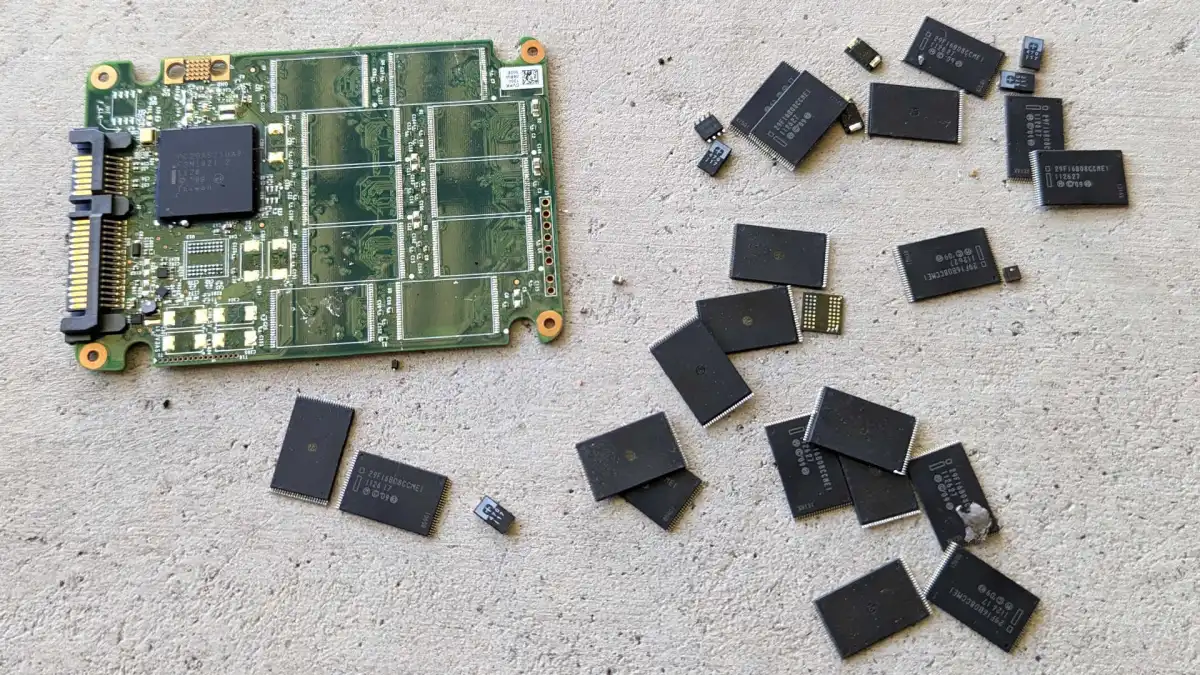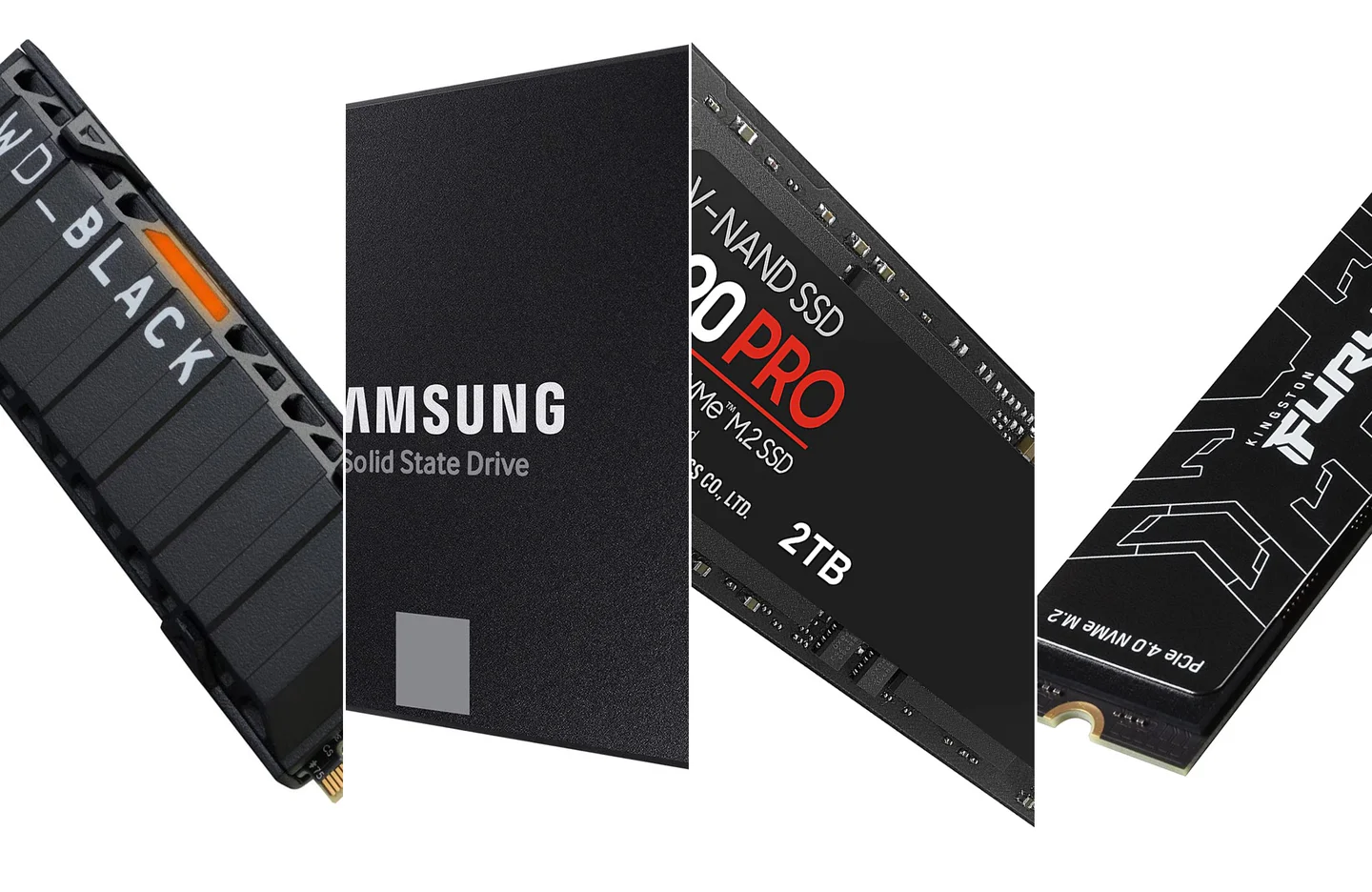Introduction
Welcome to our in-depth exploration of the fascinating world of solid state drives (SSDs) and their latency. When it comes to storage devices, speed is always a key consideration, and latency plays a crucial role in determining how quickly data can be accessed and processed. In this article, we will delve into the concept of latency, understand its impact on performance, and specifically focus on how it relates to SSDs.
What exactly is latency? Simply put, it refers to the amount of time it takes for a request to be sent from a device, processed by the storage system, and then received back. In the context of SSDs, latency is the time it takes for the drive to respond to a read or write request.
Latency can have a significant effect on the overall performance and user experience of a storage device. When latency is high, it can introduce delays in tasks such as opening files, launching applications, or booting up the system. On the other hand, lower latency translates to quicker response times, resulting in faster data access and improved system performance.
As SSDs have become increasingly popular in recent years, it is crucial to understand the factors that impact their latency. Unlike traditional hard disk drives (HDDs), which rely on spinning platters and mechanical components, SSDs utilize flash memory to store and retrieve data. This fundamental difference brings about unique advantages and challenges when it comes to latency.
In the next sections, we will explore the various causes of latency in SSDs, delve into the factors that affect latency, and examine how latency can be measured. We will also discuss typical latency ranges for SSDs and highlight the importance of latency in different use cases. Finally, we will explore strategies for minimizing latency in SSDs to optimize their performance.
What is latency?
Latency, in the context of storage devices, refers to the time delay between a request for data and the actual retrieval or completion of that request. It is essentially the time it takes for information to travel from a storage medium to the device requesting that information. Think of it as the “waiting time” for data.
Latency is influenced by various factors in a storage system, including the storage medium itself, the hardware components involved, and the protocol utilized for communication. In the case of solid state drives (SSDs), latency is particularly important because SSDs are known for their speed and responsiveness.
When a user initiates an action on a computer that requires data access, such as opening a file or launching an application, the system sends a request to the storage device. The device then needs to locate the requested data, retrieve it, and send it back to the system. During this process, latency plays a crucial role in determining how quickly the data can be accessed and returned.
Latency is typically measured in milliseconds (ms) or even microseconds (μs) for SSDs. It can be categorized into two main types. The first is known as “read latency,” which refers to the time it takes for a storage device to locate and retrieve requested data. The second type is “write latency,” which represents the time it takes for data to be written to the storage device.
Several factors contribute to latency in storage devices. The primary factor is the physical distance that data needs to travel within the device. In the case of SSDs, this involves the time it takes for an electrical signal to pass through various components and memory cells to retrieve or store the required data.
Other factors that can affect latency include the file system used, the efficiency of the storage controller, the complexity of data retrieval algorithms, and the overall workload placed on the storage device. These factors vary depending on the specific architecture and design of the storage system.
Understanding latency is essential, as it determines the responsiveness and speed of a storage device. By minimizing latency, storage systems can deliver faster data access and improve overall system performance. In the next sections, we will explore how latency impacts performance and dive deeper into the specific aspects of SSDs and their latency characteristics.
How does latency impact performance?
Latency has a significant impact on the overall performance and user experience of a storage device. When latency is high, it introduces delays in data access, resulting in slower system responsiveness and reduced efficiency. Conversely, lower latency leads to faster response times and improved performance.
Latency affects various aspects of performance, including data retrieval, file access, and application launch times. With higher latency, it takes longer for the storage device to locate and retrieve data, leading to slower file transfers and increased load times for applications or games.
In systems where multiple requests are made simultaneously, such as in server environments or heavy multitasking scenarios, high latency can cause queuing delays and bottlenecks. As a result, the overall system performance can suffer, leading to decreased productivity and user satisfaction.
Additionally, latency plays a crucial role in real-time applications that require immediate data access, such as video editing, gaming, or financial trading. High latency can introduce noticeable lag and impact the smoothness of these applications, resulting in a degraded user experience.
Moreover, latency can impact the input/output (I/O) operations per second (IOPS) of a storage device. IOPS represents the number of read or write operations that can be performed within a given time frame. Higher latency limits the number of IOPS that a storage device can achieve, reducing its overall throughput and performance.
For example, in scenarios where fast data access is critical, such as database servers or cloud computing, minimizing latency is crucial to ensure optimal performance. A delay of milliseconds can make a substantial difference in terms of throughput and the number of transactions a system can handle.
In summary, latency directly impacts the performance of storage devices. Higher latency leads to slower data access, increased file transfer times, and reduced system responsiveness. In contrast, lower latency results in improved performance, faster response times, and enhanced user experience. In the next section, we will explore the unique characteristics of solid state drives (SSDs) and how they relate to latency.
Understanding Solid State Drives (SSDs)
Solid State Drives (SSDs) have revolutionized the storage industry with their high-speed performance and reliability. Unlike traditional hard disk drives (HDDs), which utilize spinning platters and mechanical read/write heads, SSDs are entirely based on flash memory technology. This fundamental difference brings about unique advantages and challenges when it comes to latency and overall performance.
SSDs are composed of NAND flash memory chips that store data electronically. When a read operation is performed on an SSD, electrical voltage is applied to the appropriate memory cells, and data is read directly from these cells. Similarly, during a write operation, data is programmed onto the memory cells using a specific voltage level.
The absence of mechanical components in SSDs eliminates the seek time and rotational latency associated with HDDs. This inherent advantage allows SSDs to have significantly lower latency compared to traditional mechanical drives. As a result, SSDs offer faster data access and transfer speeds, leading to improved system performance.
Another unique characteristic of SSDs is their ability to perform random access to data. Unlike HDDs, which physically locate and read data from specific sectors on the disk, SSDs can access data randomly, regardless of its physical location. This random access capability further reduces latency, as the drive can retrieve requested data more efficiently, without the need for time-consuming seek operations.
SSDs also benefit from their inherent parallelism. They can perform multiple read or write operations simultaneously across multiple memory chips. This parallelism helps to distribute the workload and enhances the overall throughput of the drive, resulting in lower latency and faster data transfers.
While SSDs offer impressive performance advantages, it is important to note that their latency can still vary depending on several factors. Factors such as the specific flash memory technology used, the quality of the controller and firmware, and the workload placed on the drive can all impact the latency characteristics of an SSD.
In the next section, we will delve into the various causes of latency in SSDs and explore the factors that affect latency in these solid-state storage devices.
Causes of latency in SSDs
While solid state drives (SSDs) offer faster data access compared to traditional hard disk drives (HDDs), they are still subject to certain factors that can contribute to latency. Understanding the causes of latency in SSDs is crucial to optimizing their performance and improving overall responsiveness.
One of the primary causes of latency in SSDs is the process of data erasure. When a storage device needs to write new data to a memory cell that already contains data, it must first erase the existing data before writing the new information. This process, known as an erase operation, incurs additional latency and can impact the overall performance of the SSD.
The efficiency of the garbage collection process also affects SSD latency. Garbage collection is a background operation that ensures deleted or overwritten data is properly managed and the drive has sufficient free space for future write operations. If garbage collection is not performed efficiently, it can lead to increased latency as the SSD struggles to find available blocks for new data.
Another factor contributing to latency in SSDs is the controller’s processing time. The controller plays a crucial role in managing data storage, handling read and write operations, and performing error correction. The efficiency of the controller’s algorithms, as well as the quality of the controller itself, can impact latency. A high-quality controller, optimized for speed and responsiveness, can help minimize latency in SSDs.
Additionally, the NAND flash memory itself can introduce latency. Different types of NAND flash memory offer varying performance characteristics, and the choice of memory technology can impact latency. For example, Synchronous NAND flash memory tends to have lower latency compared to Asynchronous NAND flash memory.
Furthermore, SSDs can suffer from write amplification, which is the inefficiency in the process of writing data. Write amplification occurs when small blocks of data are written to larger physical pages in the memory cells. This process can lead to additional latency and reduced overall performance.
Lastly, variability in workload demands can impact latency in SSDs. When the workload on an SSD is high, with numerous read and write requests, latency can increase due to the increased processing and data retrieval required by the drive.
Understanding these causes of latency in SSDs is vital for optimizing their performance. In the next section, we will explore the various factors that affect latency in SSDs and delve into strategies for minimizing latency to enhance overall performance.
Factors affecting latency in SSDs
Several factors influence the latency of solid state drives (SSDs) and understanding these factors is crucial for optimizing their performance. From hardware components to software algorithms, various elements impact the latency characteristics of SSDs.
One of the primary factors affecting latency is the type of NAND flash memory used in the SSD. Different generations of NAND flash memory, such as single-level cell (SLC), multi-level cell (MLC), and triple-level cell (TLC), have varying performance characteristics. SLC NAND typically offers lower latency due to its faster programming times and endurance, while TLC NAND tends to have higher latency but provides greater storage capacity.
The complexity and efficiency of the controller and firmware also play a significant role in SSD latency. The controller is responsible for managing data storage, handling read and write operations, and performing error correction. A well-designed controller with advanced algorithms can help minimize latency and optimize performance.
Another crucial factor is the interface and protocol used by the SSD. The interface, such as SATA, PCIe, or NVMe, affects the speed and latency of data transfer between the drive and the host system. The protocol, such as SATA, AHCI, or NVMe, determines how the data is communicated between the storage device and the system, and different protocols have varying levels of latency.
The workload demands placed on the SSD also impact latency. Workloads with a high number of simultaneous read and write requests tend to increase latency as the drive has to handle multiple operations concurrently. Additionally, the type of applications and workloads can also impact latency requirements. Real-time applications, such as video editing or gaming, require lower latency for immediate data access and responsiveness.
Additionally, the level of over-provisioning in the SSD can affect latency. Over-provisioning refers to the amount of reserved space on the SSD for maintaining performance and longevity. Adequate over-provisioning can help reduce write amplification and improve performance, ultimately minimizing latency.
Lastly, the file system used in conjunction with the SSD can impact latency. Modern file systems like NTFS, exFAT, or ext4 are designed to optimize SSD performance by minimizing unnecessary read and write operations. Choosing the appropriate file system and configuring it properly can help reduce latency and enhance overall SSD performance.
By considering these various factors and optimizing the hardware components, firmware, interface, workload, over-provisioning, and file system, it is possible to mitigate latency in SSDs and achieve higher levels of performance.
Measuring latency in SSDs
Measuring latency in solid state drives (SSDs) is essential for understanding the performance characteristics of these storage devices. Several methods and benchmarks are used to quantify and evaluate the latency of SSDs, providing valuable insights into their responsiveness and speed.
One common metric used to measure SSD latency is the average access time. This metric represents the average time it takes for a storage device to respond to a read or write request. It is typically measured in milliseconds (ms) or microseconds (μs) and provides an indication of the overall latency experienced by the drive.
Another important metric is the 99th percentile latency. This measurement represents the time it takes for 99% of the read or write operations to complete. It is particularly valuable in scenarios where consistent and predictable performance is crucial, such as in real-time applications or high-demand environments.
SSD manufacturers often provide specifications of latency estimates for their drives, indicating the expected range of latency values. These estimates can serve as a reference point for comparing the performance of different SSD models, helping users make informed decisions based on their specific requirements.
Benchmarking tools are widely used to measure SSD latency and evaluate their performance. These tools simulate various read and write operations, measuring the time it takes for the drive to complete these tasks. Some popular benchmarking tools include CrystalDiskMark, AS SSD Benchmark, and ATTO Disk Benchmark.
Latency benchmarks often include different workload scenarios, such as sequential and random read/write operations, to provide a comprehensive assessment of the SSD’s performance across various usage patterns. These benchmarks generate latency metrics such as average read/write latency, IOPS (input/output operations per second), and queue depth, allowing users to compare and analyze different drives effectively.
It is worth noting that the measurement of SSD latency is influenced by the specific system configuration, test conditions, and workload applied during benchmarking. Therefore, conducting multiple tests under different scenarios and comparing the results can provide a more accurate representation of the SSD’s latency characteristics.
Measuring latency in SSDs is an essential process for evaluating their performance and determining their suitability for specific use cases. By using proven benchmarking tools and analyzing latency metrics, users can make informed decisions when selecting an SSD that meets their latency requirements and performance expectations.
Typical latency ranges for SSDs
When it comes to solid state drives (SSDs), latency plays a critical role in determining their performance and responsiveness. The latency of an SSD is influenced by various factors, including the storage technology used, the controller’s efficiency, and the workload demands placed on the drive. Understanding the typical latency ranges for SSDs can help users assess their suitability for different applications and usage scenarios.
On average, SSDs offer significantly lower latency compared to traditional hard disk drives (HDDs). While HDDs typically have latencies in the range of several milliseconds (ms), SSDs can provide much faster response times, often in the range of microseconds (μs). This marked difference in latency contributes to the superior performance and snappy user experience commonly associated with SSDs.
The specific latency range of an SSD can vary depending on several factors, including the drive’s architecture, technology, and the workload it is subjected to. As technology advances, newer generations of SSDs tend to offer lower latencies and improved overall performance.
As of now, it is common to find SSDs with read latencies in the range of 70 to 150 microseconds (μs). These low latencies enable quick access to data, resulting in swift application launches, faster file transfers, and improved system boot times.
Write latencies for SSDs generally fall within the range of 100 to 200 microseconds (μs). However, it is important to note that write operations generally exhibit slightly higher latency compared to read operations in SSDs due to the nature of the programming and erasing processes involved.
It is worth highlighting that these latency ranges are average values obtained from testing and benchmarking various SSD models. The actual latency experienced by an SSD can vary based on factors such as the workload conditions, system configuration, and specific drive characteristics.
Furthermore, enterprise-grade SSDs designed for high-performance computing and server environments often offer even lower latencies compared to consumer-grade SSDs. These high-end drives typically have latencies in the range of tens of microseconds (μs) for both read and write operations, providing rapid data access and exceptional performance for demanding applications.
It is important to consider the specific latency requirements of your application or use case when selecting an SSD. While consumer-grade SSDs offer excellent performance for everyday computing tasks, professional workstations, servers, and applications with stringent latency constraints may benefit from high-end enterprise-grade SSDs with extremely low latencies.
Ultimately, understanding the typical latency ranges for SSDs allows users to make informed decisions and select the most suitable SSD for their specific needs.
Importance of latency in different use cases
The importance of latency in solid state drives (SSDs) varies depending on the specific use case or application. In some scenarios, even small delays in data access can have significant consequences, while in others, latency may have a relatively minimal impact on overall performance. Understanding the importance of latency in different use cases helps determine the criticality of fast data access and the suitability of SSDs for specific applications.
In real-time applications, such as video editing, gaming, and virtual reality, low latency is crucial to deliver a seamless and immersive user experience. High latency in these applications can introduce noticeable lag and delay, impacting the responsiveness and smoothness of gameplay or video playback. SSDs with low latency enable fast data retrieval, reducing delays and ensuring real-time interactions in these time-sensitive scenarios.
In database or server environments, where quick and reliable data access is essential, latency plays a pivotal role. Databases often handle concurrent read and write operations, and any delay in data retrieval or storage can affect transaction processing speed and overall system responsiveness. SSDs with low latency ensure rapid access to data, enhancing the performance of database systems and reducing latency-related bottlenecks.
Financial trading platforms are another area where latency is of utmost importance. In high-frequency trading, where split-second decisions can yield significant profit or loss, minimizing latency is critical. Slight delays in data access could result in missed trading opportunities or inaccurate market information. SSDs with ultra-low latency are favored in these high-pressure trading environments to ensure the fastest possible processing and execution of transactions.
Content creation workflows, such as video rendering or 3D modeling, often involve working with large file sizes and complex data sets. In these scenarios, low latency SSDs significantly improve productivity by reducing the time required to open, save, and process these large files. Faster data access enables designers, animators, and content creators to work more efficiently and complete projects in a shorter timeframe.
For everyday computing and general productivity tasks, latency is still an important consideration, albeit with less critical implications. Faster data access results in snappier application launches, smoother multitasking, and reduced wait times for file transfers. While the impact of latency may not be as noticeable in routine computing tasks, users still benefit from the improved overall responsiveness that low-latency SSDs offer.
In summary, the importance of latency in SSDs varies across different use cases. In real-time applications, financial trading, database systems, content creation, and high-performance computing environments, low latency is crucial for achieving optimal performance and ensuring real-time responsiveness. However, for everyday computing tasks, while latency remains important, the impact may not be as pronounced. Understanding the specific latency requirements of each use case allows users to select the appropriate SSD that strikes the right balance between performance and cost-effectiveness.
Minimizing latency in SSDs
Minimizing latency is a key consideration for optimizing the performance of solid state drives (SSDs). Lower latency results in faster data access, improved system responsiveness, and enhanced user experience. Several techniques and strategies can be employed to minimize latency in SSDs and maximize their performance.
A well-designed controller and firmware play a crucial role in reducing latency in SSDs. Advanced algorithms and efficient data management techniques can minimize unnecessary operations and optimize the performance of the drive. Investing in SSDs with high-quality controllers and firmware can significantly improve latency characteristics.
Over-provisioning is another technique used to minimize latency in SSDs. Over-provisioning refers to reserving a portion of the SSD’s capacity for tasks like garbage collection and wear leveling. This reserved space allows the SSD to perform these operations more efficiently and helps maintain consistent performance over time, reducing latency as a result.
Ensuring proper workload management and distributing tasks effectively across the SSD can help minimize latency. Balancing read and write operations and avoiding excessive simultaneous requests can prevent queuing delays and reduce latency. Properly configuring the file system and aligning it with the SSD’s characteristics can also help optimize data access and minimize latency.
Using the correct interface and protocol for SSDs can make a significant difference in reducing latency. NVMe (Non-Volatile Memory Express) is a high-performance protocol specifically designed for SSDs, offering low-latency data transfer. Using NVMe and PCIe instead of traditional SATA interfaces can significantly reduce latency and improve the overall performance of SSDs.
Choosing the right type of NAND flash memory also contributes to minimizing latency in SSDs. SLC (Single-Level Cell) NAND generally offers lower latency compared to MLC (Multi-Level Cell) or TLC (Triple-Level Cell) NAND due to its faster programming times. However, it is important to consider the trade-off between latency and capacity when selecting an SSD based on the type of NAND memory.
Regular firmware updates provided by SSD manufacturers can also help minimize latency. These updates often include performance optimizations and bug fixes that can improve the overall latency characteristics of the SSD. Staying up to date with the latest firmware releases ensures that the SSD benefits from any performance enhancements made by the manufacturer.
It is important to note that the specific measures to minimize latency may vary based on the SSD model and the intended use case. Considering factors such as workload demands, system configuration, and latency requirements helps determine the most effective strategies for minimizing latency in SSDs.
By implementing these techniques and strategies, including choosing SSDs with efficient controllers, proper over-provisioning, workload management, utilizing the right interface and protocol, selecting the appropriate NAND flash memory, and keeping firmware up to date, it is possible to minimize latency in SSDs and achieve optimal performance.
Conclusion
Understanding latency and its impact on performance is crucial when it comes to solid state drives (SSDs). With their faster data access times and reduced latency compared to traditional hard disk drives (HDDs), SSDs offer significant advantages in terms of speed, responsiveness, and overall system performance.
We explored the concept of latency and its importance in different use cases. In real-time applications, financial trading, database systems, and content creation, low latency is critical to ensure real-time responsiveness and enhance productivity. In everyday computing tasks, while latency remains important, the impact may not be as pronounced. By understanding the specific requirements of each use case, users can choose SSDs that strike the right balance between performance and cost-effectiveness.
We also delved into various factors affecting SSD latency, including the type of NAND flash memory, efficiency of the controller and firmware, workload demands, and the choice of interface and protocol. These factors all contribute to the latency characteristics of SSDs and should be considered when selecting the most suitable SSD for a particular application or usage scenario.
Measuring latency in SSDs through benchmarks and performance evaluation tools allows users to quantify and compare the performance of different drives. It provides valuable insights into the responsiveness and speed of the SSD, enabling informed decision-making.
Finally, we discussed strategies for minimizing latency in SSDs, such as utilizing efficient controllers and firmware, implementing over-provisioning, optimizing workload management, selecting the appropriate interface and protocol, and choosing the right type of NAND flash memory. Employing these strategies helps optimize the performance of SSDs, reduces latency, and enhances overall system responsiveness.
By understanding the significance of latency, considering the specific requirements of different use cases, and implementing strategies to minimize latency, users can harness the full potential of SSDs and experience faster data access, improved system performance, and enhanced user experience.







